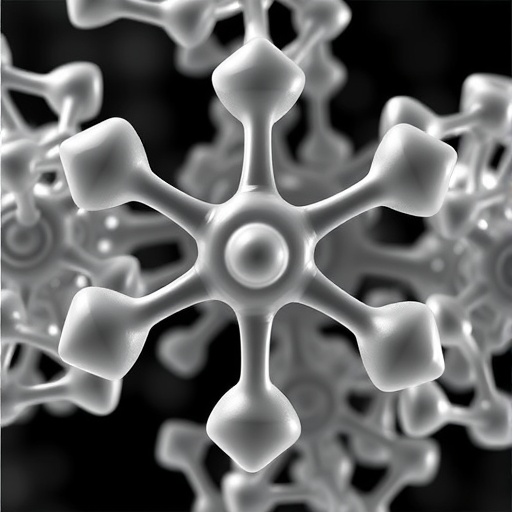In a groundbreaking study published in Nature, researchers have unveiled an innovative approach to unravel the intricate coordination environments of platinum (Pt) single-atom catalysts (SACs) using advanced nuclear magnetic resonance (NMR) techniques. This insight offers a transformative leap in catalysis research, bridging the elusive gap between atomic-scale structural understanding and practical catalytic performance. The implications promise to reshape how scientists design and optimize catalysts for industrially essential chemical reactions.
Pt-based catalysts have long epitomized the pinnacle of catalytic efficiency and selectivity, particularly in critical processes such as vinyl chloride monomer production and various hydrogenation reactions. However, the atomistic intricacies surrounding Pt sites—especially when atomically dispersed—have remained notoriously difficult to decipher. Conventional imaging techniques like high-angle annular dark-field scanning transmission electron microscopy (HAADF-STEM) provide spatial distribution insights but fall short in revealing subtle changes in the electronic and chemical environment at the atomic level. The new NMR-based methodology dives deep into these microcosms, enabling real-time tracking of changes in Pt coordination.
The researchers focused on a specific catalyst known as Pt@NC, consisting of single Pt atoms embedded within a nitrogen-doped carbon (NC) matrix. Pt@NC is of particular industrial relevance in acetylene hydrochlorination—a key step in manufacturing vinyl chloride monomer, a precursor for widely used polyvinyl chloride plastics. Despite the high initial activity of Pt@NC catalysts, their performance traditionally degrades over operational time due to unclear deactivation pathways, posing a long-standing barrier to industrial scalability. By applying this cutting-edge NMR technique, the team aimed to expose the atomic-level changes that accompany catalyst aging and deactivation.
Central to their findings is the observation that the Pt’s local chemical environment evolves during catalysis, shifting from nitrogen-rich coordination spheres to those increasingly dominated by chloride ligands. NMR chemical shifts and anisotropy parameters exhibited distinct transformations; for instance, initial iso-shift (δ_iso) values around –2,100 ppm and anisotropy (Ω) near 8,000 ppm gradually shifted to approximately –1,600 ppm and 9,500 ppm, respectively, after 12 hours of reaction exposure. This gradation signals a pronounced chlorination process at the Pt sites, a factor strongly correlated with catalyst deactivation.
Remarkably, HAADF-STEM imaging confirmed that Pt remained atomically dispersed throughout the deactivation timeline, dispelling concerns that aggregation or sintering might underlie performance drops. Instead, the subtle but crucial rearrangement in local ligand environment around Pt atoms—detected sensitively by NMR—provides a novel mechanistic understanding. Complemented by these spectroscopic signatures, previous studies had implicated coking at nitrogen sites as a deactivation mechanism. The current study extends this narrative, highlighting excessive chlorination as an equally critical factor undermining catalyst longevity.
Not only does this approach shed light on deactivation phenomena, but it also establishes NMR as a robust quantitative tool for probing uniformity and heterogeneity within ostensibly monodisperse single-atom catalysts. The investigations revealed that even catalysts with uniform nuclearity exhibit a distribution of coordination environments, underscoring the nuanced complexity of catalytic active sites. Such revelations underscore the necessity of molecular-level precision when tailoring catalysts for enhanced activity and stability.
By quantifying minute variations in Pt coordination, the researchers successfully tracked synthetic reproducibility, compared support materials, and monitored changes induced by post-synthetic treatments. This multi-dimensional analytical power represents a paradigm shift, enabling the rational design of SACs with predefined, well-characterized active sites, thereby mapping structure-function relationships with unprecedented clarity.
The work also opens the door to more elaborate atomically dispersed architectures, such as dual-atom and single-cluster catalysts, which hold promise for synergistic catalytic properties. These complex systems have remained challenging to characterize due to their structural diversity and dynamic behavior under reaction conditions. The newly developed NMR toolkit offers a strategic advantage, granting researchers the capability to decode coordination environments and optimize catalyst design beyond mononuclear ensembles.
Crucially, the methodology leverages the ubiquity of NMR-active isotopes across the periodic table, suggesting broad applicability to diverse catalytic materials beyond platinum systems. This versatility paves the way for comprehensive mapping of coordination environments in metal centers spanning numerous catalytic fields, from energy conversion and environmental remediation to fine chemical synthesis.
As the chemical industry increasingly demands catalysts with atomistic precision, this study provides a blueprint for advancing catalyst technology from empirical tuning to knowledge-driven engineering. Through the unparalleled insights garnered by combining high-resolution NMR with traditional techniques, researchers can dissect the subtleties of active site evolution, promoting the development of catalysts that are not only more active but also more durable and selective.
Looking forward, the ability to tailor supports to anchor metal sites with exact local structures will facilitate breakthroughs in catalyst stability and performance. By bridging the conceptual divide between heterogeneous and homogeneous catalysis, these innovations may unlock hitherto inaccessible reactivities while minimizing undesired side reactions. The implications extend far beyond academic curiosity, promising concrete impacts on manufacturing efficiency, sustainability, and energy use.
In sum, this landmark investigation into Pt single-atom catalyst environments via NMR ushers in a new era of catalytic science. It champions a transition from structural ambiguity to atomic precision, empowering researchers to decode mechanisms of catalyst deactivation and scalability challenges. As the field moves forward, such approaches will be instrumental in engineering next-generation catalysts tailored for the pressing demands of the 21st-century chemical landscape.
Subject of Research: Coordination environments of platinum single-atom catalysts in nitrogen-doped carbon supports monitored by advanced NMR techniques.
Article Title: Coordination environments of Pt single-atom catalysts from NMR signatures.
Article References:
Koppe, J., Yakimov, A.V., Gioffrè, D. et al. Coordination environments of Pt single-atom catalysts from NMR signatures. Nature (2025). https://doi.org/10.1038/s41586-025-09068-x
Image Credits: AI Generated




